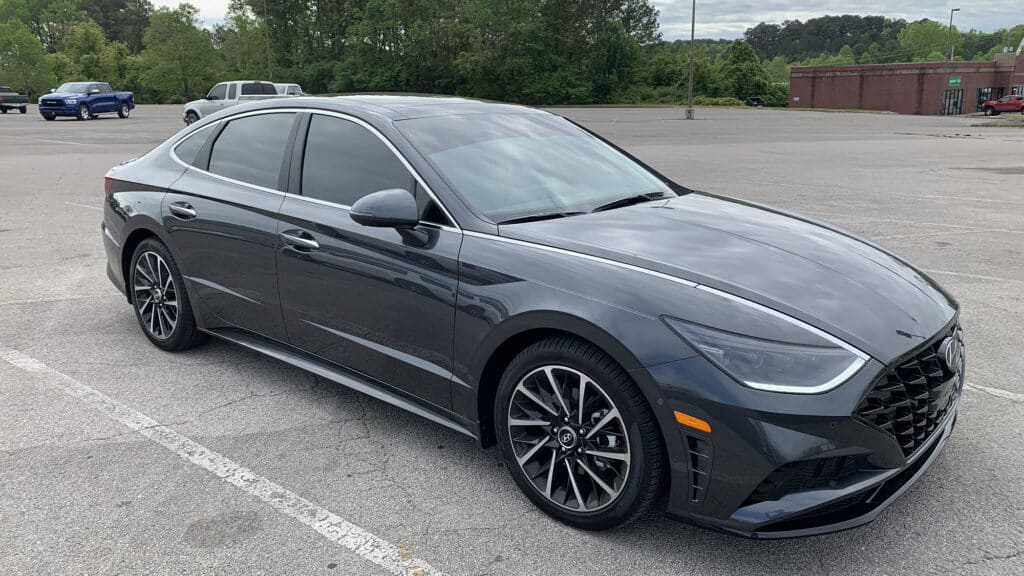Just like every other country in Europe, Ireland enforces strict laws around the use of window tint film.
The main reason behind this is that the privacy afforded by window tint is often misused to conceal illegal activity. Overly reflective tints also pose as a distraction for oncoming traffic.
However, the use of window tint is not completely outlawed because of the kind of advantages it offers. UV protection, heat control, anti-glare properties, and insulation against the cold are some of its advantages.
With all that in mind, you need to be aware of the exact specifications put forth by the Irish Road Safety Authority regarding the use of window tint.
That’s exactly what we’ll discuss in this post.
Is Window Tint Legal in Ireland?

Window tint is legal in Ireland. However, the law does not permit heavily tinted windows for several reasons.
As stated earlier, it offers a ton of privacy which is misused by some people. Another reason is that overly dark tints limit your visibility, especially at night.
If you fail to meet the stated criteria and standards, you are likely to be charged and fined by Garda Síochána (the national police of Ireland).
The guards are almost always equipped with light meters. These are devices that can test the transparency levels of your windows.
Below we discuss the exact specifications that you need to follow in order to get your windows tinted legally in Ireland.
Permitted Window Tint Darkness

In Ireland, window tint darkness is measured with the help of a unit called visible light transmission or VLT. Based on this, the percentage of visible light that goes through the tint or film is calculated.
For instance, if your tint film has 60% VLT, it indicates that it will let 60% of the ambient light through, while 40% gets obstructed.
If the VLT is much lower (15%, for instance), then only a small amount of light will be able to pass through the film.
Sedans
Windshield: 65% VLT required.
Driver-side windows: 65% VLT required.
Passenger-side windows: There are no restrictions.
Rear window: There are no restrictions.
SUVs and Vans

Windshield: 65% VLT required.
Driver-side windows: 65% VLT required.
Passenger-side windows: There are no restrictions.
Rear window: There are no restrictions.
Tint Reflection
Another factor to consider before purchasing window tint is tint reflection. This is different from tint darkness which has to do with the transparency of the tint film.
Tint reflection levels indicate the amount of light that is reflected as opposed to being filtered through into the cabin.
There are no exact specifications in place when it comes to how reflective your window tint should be in Ireland.
As long as the tint film doesn’t make it impossible to identify the driver and the passengers, it will be legal.
Other Ireland Tint Rules You Need to Know

You should have the tint measures in place based on the aforementioned rules even if you want to pass the National Car Test (NCT) in Ireland.
Some other rules are as follows.
- Medical exemptions: You cannot access medical exemptions for darker tints.
- Variance: You are allowed a variance level of around 3%.
- Violations: You will get penalty points and fines.
- External manufacturer: Even if your car was manufactured with high tint levels in another country, you might get charged. You should provide a relevant certificate in this case.
Republic of Ireland Info

Ireland (or the Republic of Ireland) is an island in Europe located close to England.
It is separate from Northern Ireland, which is a part of the United Kingdom.
Ireland is one of the largest islands in all of Europe and also has a large population among the European islands.
There are many mountains, rivers, and forests in Ireland. Its climate involves plenty of rainfall throughout the year.
Population: 5,028,230
Capital: Dublin
Registered vehicles: 2.2m
Total lane miles: 7200
Number of highways: 13
Tint law references: Road Safety Authority | National Car Test (NCT) Manual 2021

